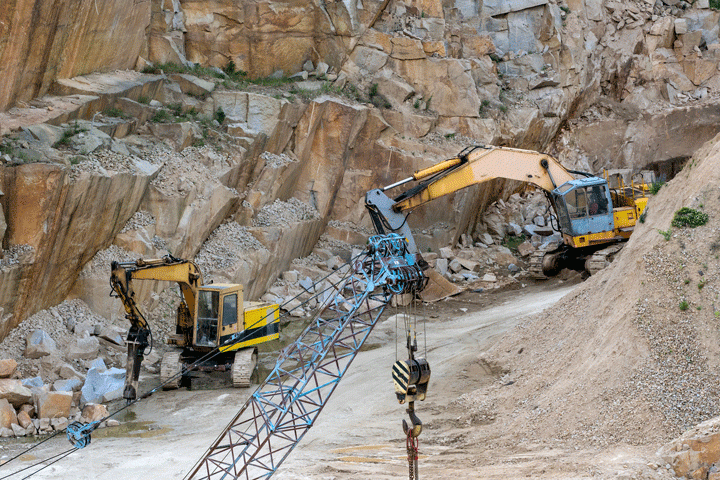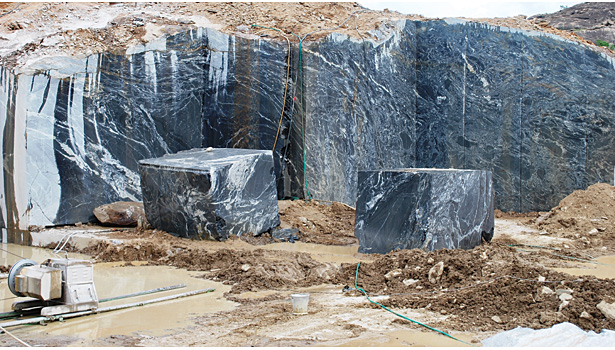The Hidden Gems: Discovering Granite Quarries in South Africa
Wiki Article
Revealing the Mysteries of Granite Quarrying: Where Toughness and Elegance Meet
The world of granite quarrying is a realm where the raw strength of nature converges with human virtuosity to develop structures that stand the examination of time with an air of beauty. From the depths of quarries to the meticulous sprucing up in workshops, the procedure of transforming granite right into architectural wonders is a complex dance of practice and technology. As we peer right into the midsts of this old craft, we start to uncover the concealed details that form the extremely essence of our constructed setting.The Origins of Granite Quarrying
In the record of architectural background, the beginnings of granite quarrying are shrouded in a tapestry of ancient craftsmanship and geological wonders. Dating back to old Egypt and Mesopotamia, the extraction of granite from quarries noted the start of a trip that would eventually cause the development of a few of the world's most iconic structures.Granite quarrying's origins can be traced to the experienced craftsmens that acknowledged the rock's sturdiness and aesthetic allure. Via a mix of primitive devices and sheer decision, these early quarry workers discovered granite blocks that would certainly come to be the building blocks of civilizations.
As civilizations evolved, so did the strategies of quarrying granite. The Romans, renowned for their design expertise, established innovative approaches for drawing out granite to construct monoliths, temples, and roadways that stood the examination of time.
The legacy of these old quarrying practices continues to shape modern style, with granite staying an icon of stamina and beauty in construction jobs around the globe. (granite quarries in south africa)
Tools of the Quarrying Trade
The advancement of granite quarrying techniques from ancient civilizations to contemporary times highlights the essential function played by the tools of the quarrying sell shaping the market's techniques. In old times, quarrying devices were basic, frequently containing chisels, hammers, and wedges made from products like bronze or iron. These tools needed significant workforce and time to remove granite obstructs from quarries.
In addition, the introduction of pneumatically-driven tools and high-powered machinery has actually significantly minimized the physical labor called for in quarrying operations, boosting worker safety and security and efficiency. As the quarrying market proceeds to innovate, the tools of the profession remain at the center of driving development and shaping the more info here future of granite removal.
Extracting Blocks of Granite
Utilizing accuracy machinery and progressed techniques, the removal of granite blocks from quarries has actually come to be an advanced process in the modern-day quarrying market. The initial action involves identifying the area and dimension of the granite deposit to identify one of the most reliable removal technique. As soon as a suitable website is picked, the extraction process begins with the exploration of holes for the positioning of dynamites. Regulated blowing up techniques are after that used to disintegrate the granite right into manageable areas.
Sprucing Up and Ending Up Methods
To attain a flawless surface area on granite blocks, skilled artisans use a series of meticulous sprucing up and finishing methods. After the first removal and shaping procedures, the granite obstructs undergo an extensive sprucing up stage to enhance their natural elegance and durability.Along with polishing, finishing strategies are put on additional refine the granite's appearance. These methods might consist of flaming, developing, or cleaning, each offering distinct appearances and finishes to suit different aesthetic preferences. Flaming, for instance, entails revealing the granite surface area to heats to create a harsh, distinctive surface, perfect for exterior applications where slip-resistance is essential. Honing, on the other hand, offers a matte surface that is smooth to the touch, perfect for interior kitchen counters and flooring. By carefully picking and using these brightening and ending up techniques, artisans can transform raw granite blocks right into beautiful items that showcase both strength and beauty.

Ecological Impact and Sustainability
With the expanding emphasis on ecological awareness in the market, granite quarrying practices are progressively scrutinized for their effect on natural deposits and lasting sustainability. Quarrying for granite can have significant environmental effects. The extraction process commonly entails using hefty try this website equipment, nitroglycerins, and large quantities of water, bring about habitat damage, dirt erosion, and water contamination. In addition, the transport of granite from quarries to processing facilities produces carbon exhausts, further contributing to ecological destruction. granite quarries in south africa.To mitigate these impacts and guarantee sustainability in granite quarrying, market stakeholders are embracing different actions. Applying innovative technologies to reduce energy consumption and water use, reclaiming quarried land for ecological restoration, and promoting responsible sourcing practices are some strategies being employed. Certifications such as the Woodland Stewardship Council (FSC) and the Management in Energy and Environmental Design (LEED) help customers recognize ecologically friendly granite items.
Conclusion
In conclusion, granite quarrying is a process that requires specialized devices and methods to extract blocks of granite and brighten them to a high level of coating. While the ecological impact of quarrying can be significant, initiatives are being made to boost sustainability practices in the sector. Overall, granite quarrying is a delicate balance between taking advantage of the strength and style of this all-natural stone while minimizing its effect on the atmosphere.Report this wiki page